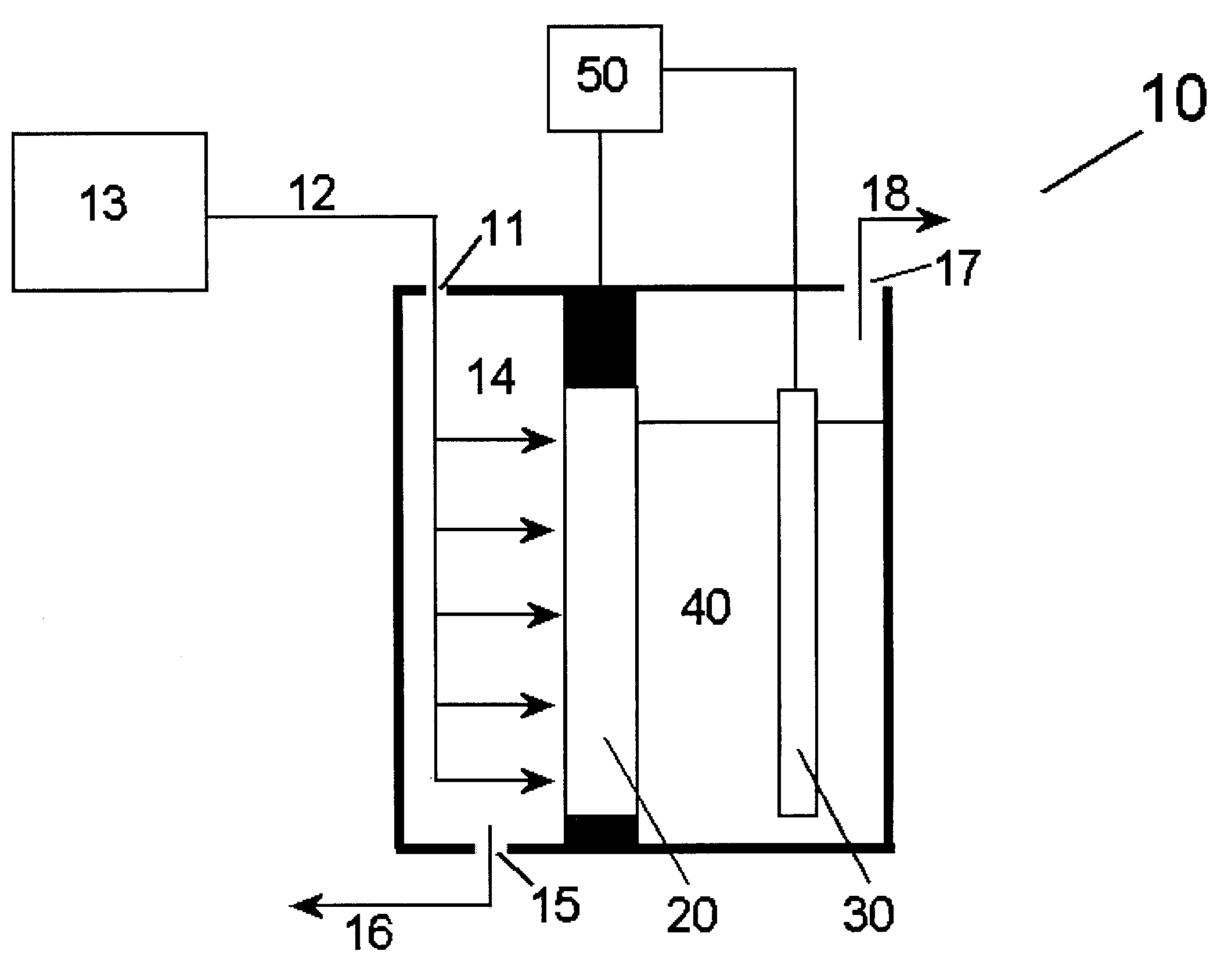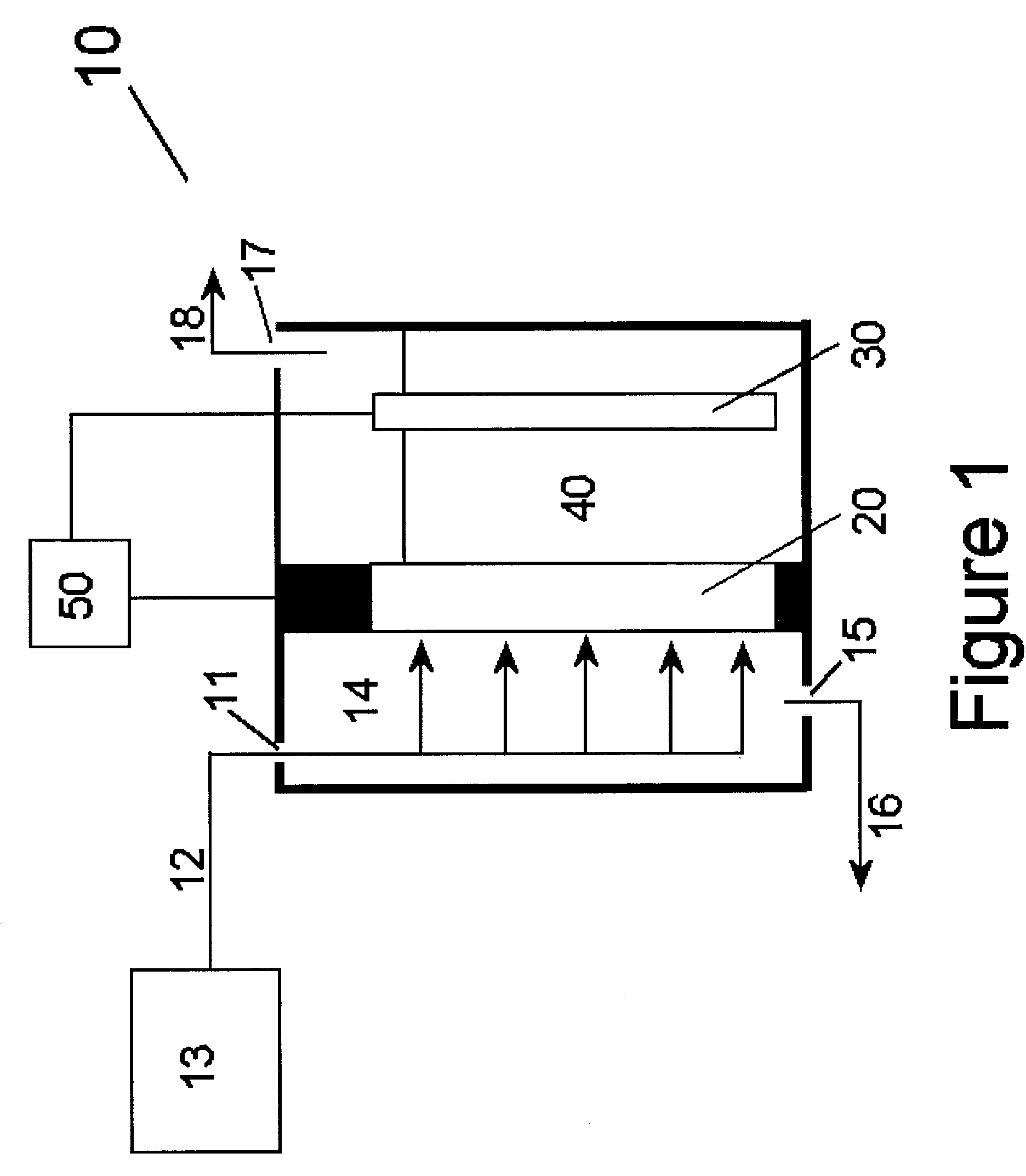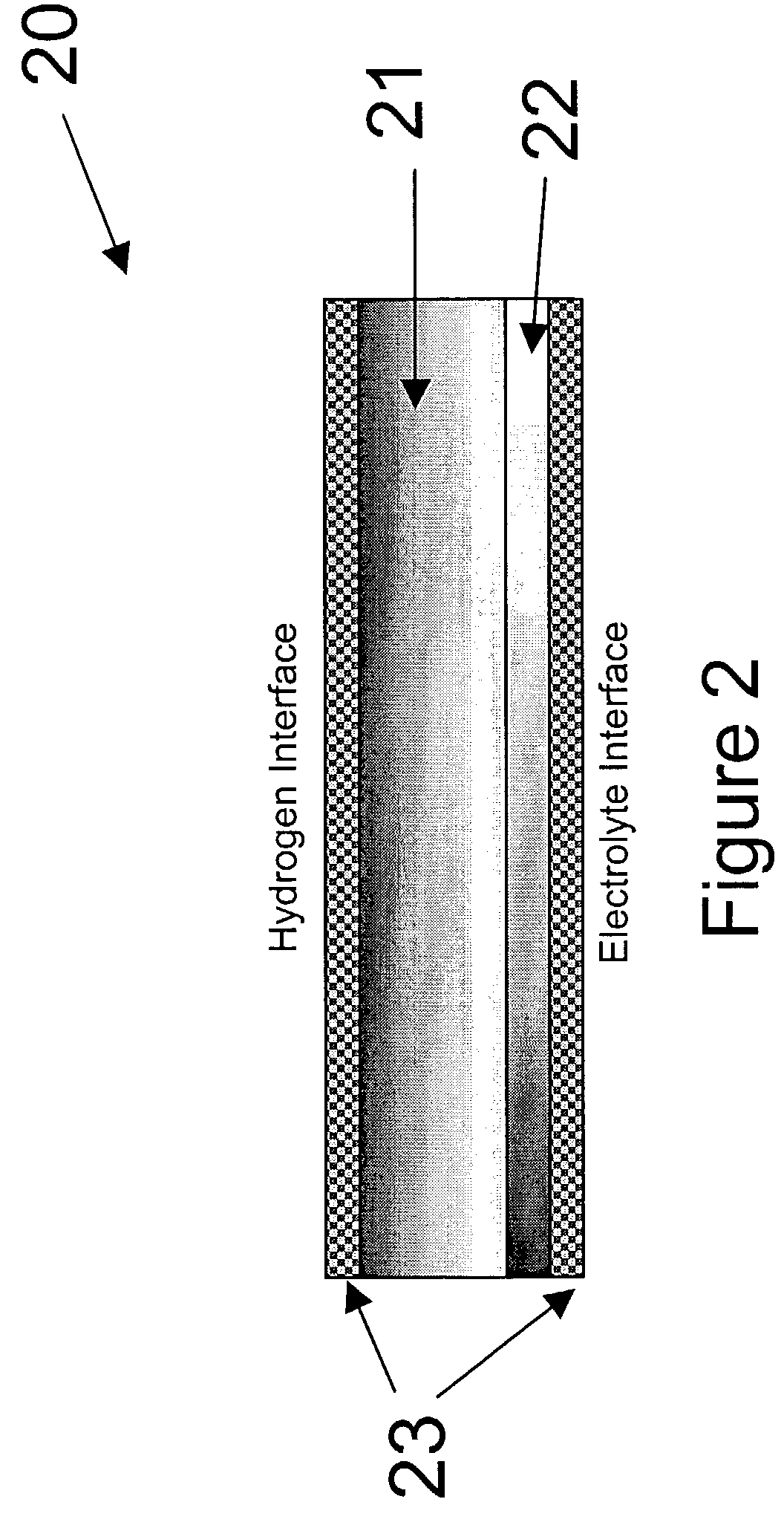Method and apparatus for electrorefining impure hydrogen
a technology of impure hydrogen and electrorefining, which is applied in the direction of electrolysis components, water/sewage treatment by electrochemical methods, separation processes, etc., can solve the problems of reducing the lifetime and operating efficiency of fuel cells, reducing the range of vehicle applications, and virtually unlimited hydrogen supply
- Summary
- Abstract
- Description
- Claims
- Application Information
AI Technical Summary
Benefits of technology
Problems solved by technology
Method used
Image
Examples
second embodiment
[0035]In the present invention shown in FIG. 3, the contaminant rich gas stream 16 exiting the gas receiving chamber 14 may be recycled into the impure hydrogen stream entering the purification system via a recycle stream 60 and enter the gas receiving chamber 14. This embodiment is used to recover any hydrogen exiting the gas receiving chamber with the contaminant gases. To prevent a buildup of contaminant gases within the purification system, a control system may be utilized to measure the concentration of hydrogen in the stream exiting the gas receiving chamber, whereby the gas exiting the gas receiving chamber is purged from the system through a purge stream 61 when the concentration of hydrogen falls below a predetermined level.
third embodiment
[0036]In the present invention as shown in FIG. 4, two or more purification systems in accordance with the present invention may be used to conserve a majority of all hydrogen contained in the impure hydrogen stream. In this embodiment, the contaminant rich gas exiting the gas receiving chamber 14 of the first hydrogen purification system 10 is input into a second gas receiving chamber 14A in a second hydrogen purification system 10A in accordance with the present invention. The contaminant rich stream 16 enters the second gas receiving chamber 14A and the hydrogen from the stream is absorbed into the gas diffusion anode 20A and a pure stream of hydrogen is produced at the electrolytic cathode 30A in the same manner as described above. The contaminant rich stream 16A then exits the second gas receiving chamber 14A and is vented, collected, or further processed to remove any additional hydrogen if feasible while the resulting hydrogen stream 18A is combined with the hydrogen stream 1...
fourth embodiment
[0037]In the present invention shown in FIG. 5, the contaminant rich gas stream 16 exiting the gas receiving chamber 14 may pass through a hydrogen separation system 70 which removes most of the contaminants from the contaminant rich gas stream 16 exiting the gas receiving chamber 14. The hydrogen separation 70 system may include metallic membranes, hydrogen permeable membranes, hydrogen getter materials, or any other means for separating a substantial amount of the contaminant gases from the hydrogen gas. In such case, the hydrogen rich stream 71 exiting the hydrogen separation system 70 is recycled into the impure hydrogen stream 12 entering the purification system and enters the gas receiving chamber 14 while the contaminant rich stream 72 is vented to the atmosphere or collected.
PUM
| Property | Measurement | Unit |
|---|---|---|
| operating temperatures | aaaaa | aaaaa |
| weight percent | aaaaa | aaaaa |
| operating temperature | aaaaa | aaaaa |
Abstract
Description
Claims
Application Information
 Login to View More
Login to View More - R&D
- Intellectual Property
- Life Sciences
- Materials
- Tech Scout
- Unparalleled Data Quality
- Higher Quality Content
- 60% Fewer Hallucinations
Browse by: Latest US Patents, China's latest patents, Technical Efficacy Thesaurus, Application Domain, Technology Topic, Popular Technical Reports.
© 2025 PatSnap. All rights reserved.Legal|Privacy policy|Modern Slavery Act Transparency Statement|Sitemap|About US| Contact US: help@patsnap.com



